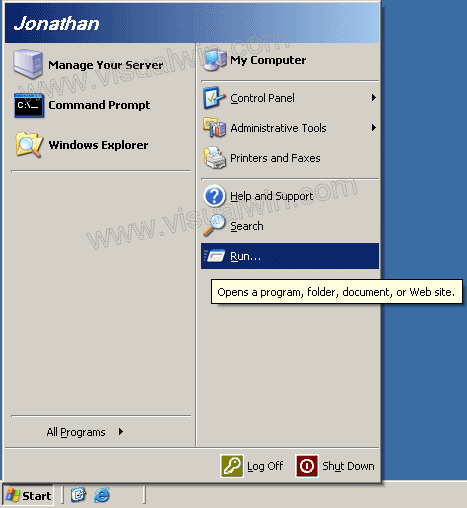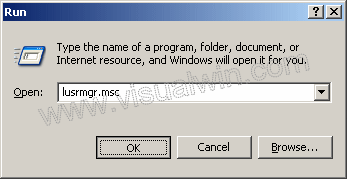
Creating a New User on Windows Server 2003
Preface:
Even if you will not be using Terminal Services or have any other users using your server it is ALWAYS recommended to create an additional two (2) users, apart from Administrator. These two users are - another member of the "Administrators" group (to avoid actually logging on with the Administrator account, but you have the same privileges) AND a regular user, who is part of the "Users" group. It is recommended to only log on with the regular user, and use the "runas" command when you need to run a program as an Administrator, and to only log on with the secondary Administrator user when it is absolutely needed. This will show you how to create a secondary Administrator.
Method:
Click the Start button, then Run...

Then type "lusrmgr.msc" without the quotes

In the window that opens, right click in the right panel and click "New User"

In the New User dialog, type in your preferences for a new user name and password (this will be our secondary Administrator account). Uncheck User must change password, and check Password never expires

Now, right click the new user and click Properties in the pop up menu

Go to the "Member of" tab and press the Add button

Type "Administrators" without the quotes, then press the Check Names button (to complete the name, it will add the name of your computer) and press OK when it is done, then press OK on the Local Users and Groups dialog

We now have a secondary Administrator account! To have a regular user (highly recommended) do the same as above, until the User properties.
My reasoning
Q: If I already made a new Administrator account why do I have to make a user account?
A: You don't have to, you never have to, but it is recommended in case you stay logged on, and someone gains control of the desktop (locally or remotely).
Q: Should I stay logged in with the Administrator account or the plain user account?
A: You should log out when you are not doing work on the server directly, however, if you have a program that requires you to be logged in for it to work (a good example is the bandwidth monitoring program, DU Meter) then you should stay logged in with the ordinary user account.
<-- Go back to the main tutorial page
Copyright © 2002-2025 Jonathan Maltz. For trademark/copyright information, click here. About me. Main page. Contact me.